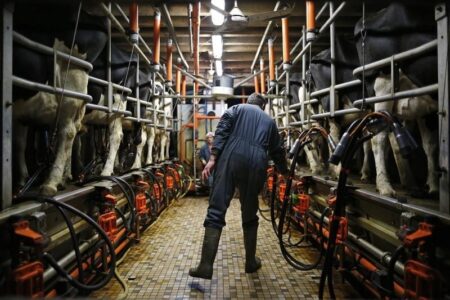By Maha El Dahan and Alex Lawler
DUBAI (Reuters) -OPEC+ members led by Saudi Arabia and Russia agreed on Sunday to extend voluntary oil output cuts into the second quarter, sources said, giving extra support to the market amid concerns over global economic growth.
Saudi Arabia, the de facto leader of the Organization of the Petroleum Exporting Countries (OPEC), said it would extend its voluntary cut of 1 million barrels per day (bpd) through the end of June, leaving its output at around 9 million bpd. The cuts would be reversed gradually according to market conditions, state news agency SPA said.
Russia, which leads OPEC allies collectively known as OPEC+, will cut oil production and exports by an additional 471,000 bpd in the second quarter, in coordination with some OPEC+ participating countries, Russian Deputy Prime Minister Alexander Novak said .
OPEC+ in November agreed to voluntary cuts totalling about 2.2 million bpd for the first quarter, led by Saudi Arabia rolling over its own voluntary cut.
OPEC+ members announce the cuts individually. Kuwait said it would cut its oil output by 135,000 bpd through June, while Algeria will curb its output by 51,000 bpd and Oman will reduce output by 42,000 bpd.
OPEC+ has implemented a series of output cuts since late 2022 to support the market amid rising output from the United States and other non-member producers and worries over demand as major economies grapple with high interest rates.
Oil prices have found support from rising geopolitical tensions due to attacks by the Iran-aligned Houthi group on Red Sea shipping, although concern about economic growth and high interest rates has weighed. futures for May settled $1.64 higher, or 2%, at $83.55 a barrel on Friday.
Sources told Reuters last week that OPEC+ would consider extending oil output cuts into the second quarter, with one saying it was “likely”.
The oil demand outlook is uncertain for this year. OPEC expects another year of relatively strong demand growth of 2.25 million bpd, led by Asia, while the International Energy Agency expects much slower growth of 1.22 million bpd.
Read the full article here












